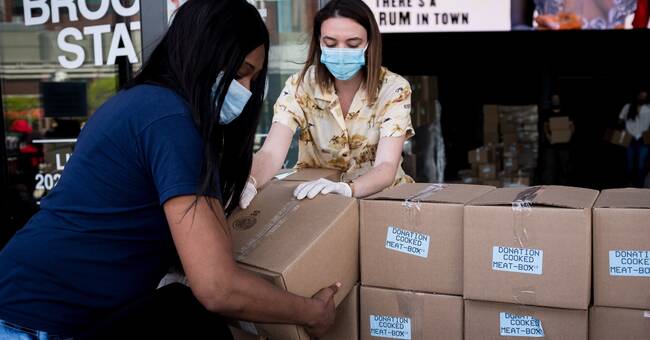The economy is one of the most important election issues, but to understand how politics affects, one should know something about people's personal finances.
In recent decades, the income gap in the United States has widened.
- After World War II, the state gained an increased role in society through the introduction of a number of social welfare programs in the United States.
Then the income gap narrows, but from 1980 onwards the development has gone in the other direction, says Dag Blanck, professor of North American studies at Uppsala University.
The gap between the richest and poorest families more than doubled between 1989 and 2016, according to a report by the think tank Pew Reserch Center.
The financial crisis and recession in the middle of the twentieth century also left deep scars - even among the middle class.
- There are many discussions in the US about the American dream.
It is often a financial dream, that you should get better than your parents.
That was the case in the 50s and 60s, but it is not a given that it is so anymore.
One in four black poor
Nearly 12 percent, or just over 38 million people, were counted as poor in 2018, according to figures from the Foreign Policy Institute.
Nearly 20 million Americans lived in extreme poverty, with an income below the poverty line.
One in five children in the United States was poor in 2018. Poverty was also more common among Latinos, Indigenous and black than among whites.
Among blacks, one in four was poor.
- The gaps in American society are correlated with race and ethnicity.
It can be seen that blacks on average have much lower incomes than whites, even though a black middle class has also emerged since the 1960s, says Dag Blanck.
Mass unemployment during the corona crisis
The corona pandemic hit the economy hard.
At first, many Americans did well, thanks to a huge support package, but since then the subsidies have decreased and now every fifth family with children lacks enough food, according to the Foreign Policy Institute.
Many have also lost their jobs.
In February 2020, unemployment in the United States was 3.5 percent - the lowest figure in over half a century.
Two months later, the figure was close to 15 percent.
It is the highest figure since the Depression of the 1930s, and in just a few weeks, more than 30 million Americans lost their jobs.
Unemployment has now fallen and in September it was just under 8 percent.

